#french guianese
Photo

A French Guianese couple of Hmong descent
28 notes
·
View notes
Text
I was telling a Spanish-speaking friend today that the word “caballo” is very fitting as it does feel like a Spanish horse (andalusian), it’s just an elegant word to me, and then we decided to make a list of what kind of horse various words for “horse” feel like
1. Caballo (Spanish). A strong yet genteel hidalgo of a horse.

2. Pferd (German). Pferd is a forthright, earnest, down-to-earth kind of chap. (I think because it brings to mind the word Erde.) That’s a Pferd:
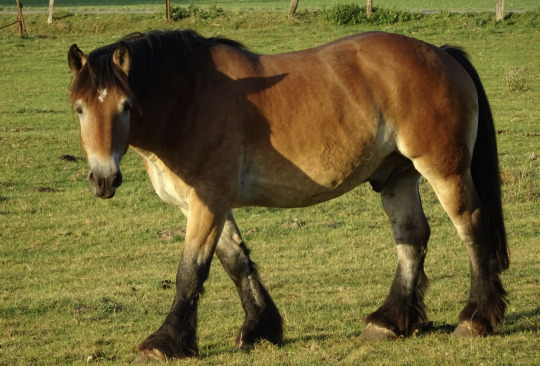
3. Zaldi (Basque): zaldi is a thin and pointy horse. No debate, this is a zaldi:

4. Chouval (Guianese / Martinican creole) — pronounced shoo-val and clearly that’s the opposite of a zaldi. An extremely round horse. Here’s a chouval :
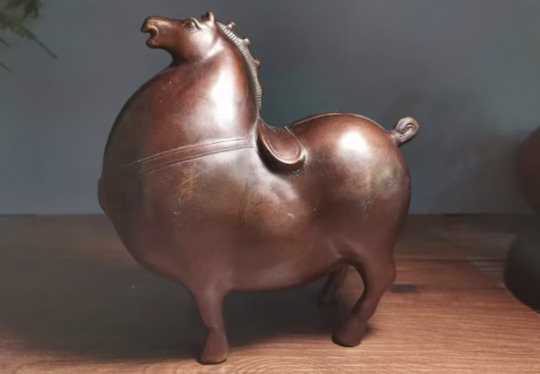
5. говр / gowr (Chechen). This one feels imposing. Large noble beast, the kind with pompon legs. This is a gowr:

6. Zirgs (Latvian). We found that the letter Z immediately reduces horse size in our minds. A zirgs has got to be the opposite of a gowr both in size and in vibe. It also feels like a busy fellow.

7. Arklys (Lithuanian). That’s an intriguing word for horse—I thought it was a distant relative of equus but we found that it’s from the word for plough! Anyway arklys is a sleek and shiny horse, like those golden fantasy horses that actually exist:

8. Horse (English). It’s not English’s fault but we both agreed that this word feels somewhat wrong, like another animal pretending to be in the equid family. It’s definitely because we pronounce it badly, we both totally ignore the letter H when reading English words inside our own heads, now add a French or Spanish ‘r’ into the mix and well, this is un ‘orse:

6K notes
·
View notes
Text
As a french person, it's kinda funny to me when fanfic writers make Alastor speak french, and it's always things like "Bonjour mon cher, je t'aime" you know, typical french words from the main France french most people learn here and there.
The thing is, Alastor knows french creole from Louisiana, which isn't the usual France french most people know. Alastor would speak like "Bonjou konmen to yê?" Or "Mo laimm twa" instead ahah.
Also, there's different versions of french creole, the one from Louisiana is not exactly the same from Antillean Creole or French Guianese Creole. If you want here's an example to what Louisiana Creole sounds like!
So yeah if you want to spice up your fics and be more accurate with your Alastor speaking french creole, dont be afraid to look out for Louisiana Creole expressions instead of the typical french you'd normally use! Makes it more fun and more accurate 💃
#hazbin hotel#hazbin hotel fandom#hazbin alastor#text#Creole is still mostly understandable for France french like me but I could not speak creole myself ahah idk if that makes sense to you#also this is not throwing shade at people who write alastor speaking french at all yall this is still a nice detail to add anyways#just some friendly tip if you want to make him speak more accurately
765 notes
·
View notes
Text
til none of the three main Reyes family actors are mexican
everybody knows Rafa's Brazilian, but Roxana's Peruvian, and Benito's Guatemalan
I didn't look for the kids because they're kids but Ana's actress is Cuban-Mexican! And I can't find Luisa's actress' ethnicity, so she could be Mexican - but if she is Latino, then based on her last name she's most likely French Guianese or Brazilian. Also, these characters only appear in one episode - at the funeral and the wedding.
I'm kind of just resigned to this kind of thing at this point, and i do love the actors and their work on the show - I couldn't imagine anyone else as Carlos for sure - but also i just wish white people would Stop
#/incoherent noises/#panther watches lone star#911 lone star#911 carlos#911 reyes family#i do like the idea of one reyes ancestor generations ago going 'okay were gonna adopt other latinos fucked over by white people#and raise them mexican' so gabriels guatemalan but he was primarily raised in mexican culture and then carlos and his sisters#are all adopted bc its tradition so none of them are mexican by blood quantum but blood quantum is bullshit anyway#theyre all mexican by culture and family other mexicane are the ones who claim them and thats whats actually important#i may explore this in fic at a later time well see#friendly reminder im chicane
4 notes
·
View notes
Text
Separatist and irredentist movements in the world
French Guiana
Proposed state: French Guiana
Region: French Guiana, France
Ethnic group: French Guianese
Goal: independence/more autonomy
Date: 1991
Political parties: Decolonization and Social Emancipation Movement
Militant organizations/advocacy groups: -
Current status: active
History
16th century - first French colony
1809-1814 - Portuguese rule
1946 - French Guiana becomes an overseas department
1991 - creation of the Decolonization and Social Emancipation Movement
2010 - status referendum
The first French presence dates to the 16th century, when French Guiana was inhabited by the Arawak, Carib, Palikur, Teko, and Wayampi peoples. It was not a permanent presence until 1643, at which point the territory was developed as a slave society.
Between 1852 and 1953 it became a penal colony, where prisoners had to do forced labor. A Portuguese-British force took French Guiana in 1809 and returned it in 1814.
In 1964, a space-travel base was established, which is now part of the European space industry. The 2010 status referendum rejected the proposed increase of autonomy in favor of full integration into France.

French Guianese
About 65% of the population is of African descent, 14% is of European ancestry, 5% is of Asian descent, and 4% is Amerindian.

The official language is French, but French Guianese Creole, other creoles, and six Amerindian languages are also spoken. Christianity is practiced by 84.2% of French Guianese, of which 74.3% are Roman Catholic.
Vocabulary
autonomie - autonomy
Guyane - French Guiana
indépendance - independence
intégration - integration
Mouvement de décolonisation et d’émancipation sociale - Decolonization and Social Emancipation Movement
2 notes
·
View notes
Text
Facts About French Guiana Language

French Guiana Language
French Guiana is an overseas department of France on the northeastern Atlantic coast of South America, just above Brazil and Guyana, with Suriname to the east and north and the Brazilian state of Amapá to the west.
An archipelago in the Guyanas group, along with two other mainland regions, it's known in French as Guyane, an archaic word that some still use today.
Here are five facts about French Guiana language you may not have known before!
1) It's an official language in its own right
French is the official language of French Guiana and is spoken by about 75% of the population.
The predominant language in French Guiana is Creole, which is an offshoot of French. Another language that can be found in French Guiana is the Amerindian language, which is spoken by indigenous populations.
French territory includes different Caribbean territories and other foreign countries such as the United States.
There is a wide range of regional languages that exist in this area as well due to its location on the borders with Suriname, Brazil, and Guyana.
Despite this wide range of regional languages, the majority of these regional languages are the predominant languages and are related to Carib Indians and there are over 25 varieties spoken throughout this region.
2) There are three kinds of people speaking it
There are three groups of people speaking French Guianese Creole as their predominant language: African slaves, forest rangers and forest tracks, and the clandestine gold prospectors who came to the region for reasons other than to exploit its resources.
African slaves were brought to work on plantations during the 18th and 19th centuries, which explains why many of them speak French Creole as their first language.
Their descendants have since acquired proficiency in French but maintain their creole as a mother tongue.
There is also a large population that speaks mixed creoles, or Maroon creoles. These people are descendants of former African slaves who fled into the jungles and eventually mixed with native populations.
They still use French as their main language but also use local languages like Guyana and Carib languages.
French convicts from France arrived in French Guiana when it was part of the penal colony known as French Guyana, between 1794 and 1897.
These French convicts mainly settled in coastal areas such as Cayenne where they developed a separate identity from those who lived inland; however, it can be difficult to tell them apart due to so much intermarriage having taken place over the years.
The French government has imposed laws preventing these settlers from various foreign countries from passing down French citizenship to their children, making it more difficult for immigrants from a foreign country to settle here legally because they're not entitled to passports or social benefits.
3) It is spoken in a specific French territory (French Guiana)
French is the only official language of France, but there are many different languages spoken in other parts of the country.
This is mainly due to the diversity of cultures that were brought in by immigrants from their home countries.
The territory of Guiana is one example. It is a part of France in South America and has a population that speaks Maroon Creole languages, and some people speak Guyanese Creole.
There are also some other dialects like Eloi or La Pointe Creole. Operation Anaconda took place here in 1964, which was an effort to try and end all resistance against the U.S., though it eventually failed as well.
Air France operates flights out of Cayenne airport to Paris. Every year, around 100 million euros worth of gold comes out of the mines near Roura to be exported through Air France back to Paris.
French Guiana’s main export is gold, followed by manioc (a starchy root), bananas, coffee, shrimp, and timber products. Manioc flour is often used in french fries because it is easy to produce and has a lower cost than potatoes.
4) Every speaker speaks one other language besides it
French Guiana is a country that borders Brazil and Suriname. The population of this country is about 250,000 people, but there are only two languages spoken in this area: Creole and French.
The main language spoken in French Guiana is Creole, which was developed by the African slave trade.
The majority of the people who live in this area speak Creole as their first language because they grew up around it and because it offers them a sense of identity. If you want to know how to translate English into creole using google translate then you must check this.
The second most common language spoken in the country is French, which was brought to this area by European immigrants during the colonial era.
There are many different types of French spoken in France, but the version found in French Guiana is not one of them. It has been adapted to fit the sound system used by speakers of Creole, which means it may sound different than what you're used to hearing.
French is also still considered an important part of culture today because it is used by the French government for business and school instruction.
While many people feel like this form of education strips children of their sense of identity, the truth is that with so few jobs available for those who don't know how to read or write Creole well enough, not being able to understand and communicate with others would mean certain unemployment for these individuals.
5) People from neighboring territories can understand it
One of the most interesting facts about the French Guiana language is that it's actually spoken by people from neighboring territories such as Brazil and Suriname.
The difference between those who live in Guyana and those who live in these other regions is that locals are able to understand each other, whereas people living outside of this region would not be able to comprehend what they're saying.
Another fact worth mentioning is that English words are often used within the French Guiana language. It's true: the local lingo often features words like okay, tonight, weekend, etc.
FAQ'S
French Guiana is an overseas department of France in the United States and has been a part of the European Union since 2004. Its official language is French, but many indigenous groups speak their own languages as well.French Guiana has two official languages, French and Creole. It is estimated that only about 3% of the population speaks English or Spanish. The majority of the population speaks Creole, which is a mix of African, European, and Asian languages.French Guiana is an overseas region of France and a department in South America. The majority of the population speaks French as their mother tongue, with other languages spoken in this region including Creole, Portuguese, Spanish, and other Caribbean territories.France still owns a large chunk of the South American country due to a treaty signed in 1814 between the French government and Brazil.
Read the full article
0 notes
Text
Hello! I have an important announcement to make!
You’re beautiful. You’re cute. You’re pretty. You’re gorgeous. You’re handsome. You’re wonderful.
Yes, you. You, the person reading this. You’re incredible and you are loved.
I do not care about your orientation, be it: straight, gay, bi, pan, omni, lesbian, poly, a-spec, aro, ace, litho, quoi, aroflux, aceflux, demi, queer, or what have you. I don’t care if your romantic and sexual orientation match or not.
I do not care about your gender. Cis, trans, bigender, trigender, demigender, nonbinary, genderfluid, genderflux, agender, genderqueer, polygender, pangender, omnigender, quoigender, or anything else.
I do not care about the colour of your skin, your race, your ethnicity. White, Black, European, Caucasian, Middle Eastern, Asian, Indian, Aboriginal, Mixed...
I care not for your nationality. Afghan, Albanian, Algerian, Andorran, Angolan, Anguillan, Antiguan, Barbudan, Argentine, Armenian, Australian, Austrian, Azerbaijani, Bahamian, Bahraini, Bangladeshi, Barbadian, Belarusian, Belgian, Belizean, Beninese, Bermudian, Bhutanese, Bolivian, Bosnian, Herzegovinian, Motswana, Brazilian, British Virgin Islander, Bruneian, Bulgarian, Burkinabe, Burundian, Cambodian, Cameroonian, Canadian, Cabo Verdean, Caymanian, Central African, Chadian, Chilean, Chinese, Christmas Islander, Cocos Islander, Colombian, Comoran, Congolese, Costa Rican, Ivorian, Croat, Cuban, Cypriot, Czech, Dane, Djibouti, Dominican, East Timorese, Ecuadorean, Egyptian, Salvadoran, English , Equatoguinean, Eritrean, Estonian, Ethiopian, Falkland Islander, Fijian, Finn, French, French Guianese, Gabonese, Gambian, Georgian, German, Ghanaian, Gibraltarian, Greek, Greenlander, Grenadan, Guadeloupean, Guatemalan, Channel Islander, Guinean, Guinea-Bissauan, Guyanese, Haitian, Honduran, Hungarian, Icelander, Indian, Indonesian, Iranian, Iraqi, Irish, Manx, Israeli, Italian, Jamaican, Japanese, Jordanian, Kazakhstani, Kenyan, I-Kiribati, North Korean, South Korean, Kuwaiti, Kyrgyz, Lao, Latvian, Lebanese, Mosotho , Liberian, Libyan, Liechtensteiner, Lithuanian, Luxembourger, Macedonian, Malagasy, Malawian, Malaysian, Maldivan, Malian, Maltese, Marshallese, Martiniquais, Mauritanian, Mahorais, Mexican, Micronesian, Moldovan, Monegasque, Mongolian, Montserratian, Moroccan, Mozambican, Myanmarese, Namibian, Nauruan, Nepalese, Dutch, Dutch Antillean, Aotearan, New Zealander, Nicaraguan, Nigerien, Nigerian, Norwegian, Omani, Pakistani, Palauan, Palestinian, Panamanian, Papua New Guinean, Paraguayan, Peruvian, Filipino, Pole, Portuguese, Puerto Rican, Qatari, Reunionese, Romanian, Russian, Rwandan, Saint Helenian, Kittian and Nevisian, Saint Lucian, Vincentian, Samoan, Sammarinese, Sao Tomean, Saudi, Scottish, Senegalese, Serbian, Seychellois, Sierra Leonean, Singaporean, Slovak, Slovene, Solomon Islander, Somali, South African, Spanish, Sri Lankan, Sudanese, Surinamer, Swazi, Swede, Swiss, Syrian, Taiwanese, Tajik, Tanzanian, Thai, Togolese, Tongan, Trinidadian, Tunisian, Turk, Turkmen, Tuvaluan, Ugandan, Ukrainian, Emirati, British, American, Uruguayan, Uzbek, Ni-Vanuatu, Venezuelan, Vietnamese, Virgin Islander, Welsh, Yemeni, Zambian, or Zimbabwean.
I do not care about your religion, whether you’re: Roman Catholic, Protestant, Adventist, Anabaptist, Anglican, Baptist, Methodist, Presbyterian, Evangelical, Lutheran, Moravian, Pentecostal, Quaker, Calvinist, Western Rite Orthodox, Eastern Catholic, Eastern Protestant, Eastern Orthodox, Oriental Orthodox, Muslim, Jewish, Hindu, Pagan, Wiccan, Amish, Mennonite, Buddhist, Confucian, Taoist, etc
You are valued, you are loved, you are wonderful, and you are beautiful.
I hope you have a good day or night, a good week, a good month, and a good year.
I love you and wish you the best.
#gay pride#lesbian pride#bi pride#bigender pride#pan pride#pangender pride#poly pride#polyamorous pride#omni pride#aspec pride#aro pride#ace pride#agender pride#quoi pride#quoigender pride#demi pride#demigender pride#queer pride#trans pride#enby pride#nonbinary pride#genderfluid pride#genderflux pride#genderqueer pride#trigender pride#lgbtq pride
143 notes
·
View notes
Photo

French Guiana, overseas territorial collectivity of France, situated on the northeastern coast of South America. French Guiana is bounded by Brazil to the south and east, Suriname to the west, and the Atlantic Ocean to the northeast. The capital is Cayenne.
French Guiana’s population is principally Creole (mixed descent, also referred to as Guianese Mulatto), with minorities of metropolitan French, Haitians, Surinamese, Antilleans, Chinese, Brazilians, South Asians, and others. The principal languages spoken are French (official); Guianese Creole French; several indigenous languages, including Wayampi, Carib, and Emerillon; and the various languages of the immigrant communities. The principal religious affiliation is Christianity (primarily Roman Catholicism), adhered to by more than four-fifths of the population.
The populace is concentrated principally in and around Cayenne, the largest city, and the coastal regions; the interior is largely uninhabited. Demographic rates are those generally typical of a developing country. There was immigration from Southeast Asia, Haiti, and the French Caribbean territories beginning in the late 20th century.
French Guiana has a developing market economy, patterned on that of metropolitan France and sustained by aid and technical assistance from France. A rocket-launching base at Kourou, used by the European Space Agency, is of great importance to the economy, accounting for about one-fourth of the country’s annual gross domestic product (GDP). Services, manufacturing, and construction are the largest sectors of the economy. The gross national income (GNI) per capita is among the highest in South America.
Agriculture produces only a small part of GDP. Subsistence farming predominates and centres on the growing of cassava, rice, bananas, and cabbages. Most small farms are worked and owned by families, but there are some large estates engaged in growing cash crops, largely for export to metropolitan France.
The heavily forested land includes valuable commercial species. Some forestland is reserved by the state, but most is open to exploitation. Most of the timber cut is used for industrial purposes, and of that about two-fifths is exported. Pastures support mainly cattle, pigs, and poultry. Meat and milk production is limited, and large quantities of both must be imported. Shrimps account for a large portion of the annual fish catch.
Mineral exploitation is of negligible importance, and French Guiana must import fossil fuels and metallic minerals. Gold and clays are the only minerals extracted.
Manufacturing industries are concentrated on cement, rum, and finished wood products. Most capital and consumer goods must be imported. Electricity is generated entirely from thermal plants using imported fossil fuels.
Most of the labour force is employed in services and industry, with a small fraction in agriculture. Wages and benefits are legislated at the same rates as those that prevail in France. Unemployment and inflation rates are high.
Although about two-fifths of the country’s roads are paved, the road system is underdeveloped in the interior. Dégrad des Cannes, Larivot, Saint-Laurent du Moroni, and Kourou are principal ports. Some of the country’s waterways are navigable by small oceangoing craft, but most are navigable only by shallow-draft vessels. There is an international airport at Cayenne.
The balance of trade is chronically unfavourable, with the value of exports far outweighed by that of imports. Machinery, food and agricultural products, and refined petroleum dominate imports, whereas motor vehicles and their parts, gold, electrical machinery and electronics, fish, and shrimps are the leading exports. Major trading partners are France, the other countries of the European Union, and the French Antilles (Guadeloupe, Martinique, Saint Barthélemy, and Saint Martin).
French Guiana’s cultural milieu reflects the diverse background of the resident ethnic communities. Indigenous and African crafts, customs, and arts predominate among their respective peoples. A distinctive mixed-Creole culture is dominant in the urban areas, highlighted by brilliantly coloured and distinctively patterned costumes; dances reflecting African, East Indian, and French 18th-century influence; and festivals, especially the pre-Lenten Carnival, when much of the population devotes itself to costume design, musical composition, and dance competitions. Léon Damas, a French Guianese poet, was a leader of the Negritude movement in Caribbean literature beginning in the 1930s.
Finally, I will leave a link which includes all companies and enterprises in French Guiana, for those who want to research and discover more about this territory. Thanks for reading.
All businesses address in French Guiana: https://findsun.net/GF
6 notes
·
View notes
Text
Angel Chow-Toun Gif Pack
Day 44/45



Under the cut, you’ll find #55 gifs of French Guianese actress, singer-songwriter, tv host, director, and journalist Angel Chow-Toun. Ethnically she is ¾ French Guianan [Afro French Guianan, Chinese, Indian, Italian, Possibly Other], and ¼ Puerto Rican, so cast her correctly!
These fit @tasksweekly tasks: #003: Gifs, #040: China, #043: Puerto Rico, #058: India, #163: Afro-latine, and #164: French Guiana
In celebration of Hispanic Heritage Month (September 15 - October 15), I’m releasing resources for at least one Latine fc a day every day from September 1st - October 15th. For all of those resources, click the link here!
If you find these useful, consider buying me a coffee here, but these are available regardless.






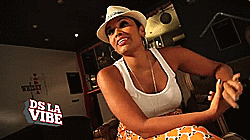









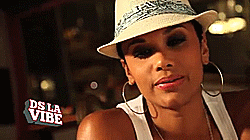























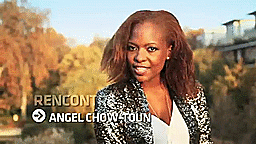














#tasksweekly#gifpackshq#gmcentral#gif pack#rph#rpc#gif hunt#underused fc#**my resc.#hispanicheritagemonth2019#angel chow-toun resources
10 notes
·
View notes
Photo

Illustration Photo: Located around 60 km northwest of the French Guianese capital Cayenne, Kourou is a coastal town in the north-central part of the country and is visible in the lower right of the image. The town lies at the estuary of the Kourou River which, after its journey of 144 km, empties into the Atlantic Ocean. Its muddy waters appear brown most likely due to sediments picked up from the surrounding forest. (credits: contains modified Copernicus Sentinel data (2020), processed by ESA, CC BY-SA 3.0 IGO)
Using Copernicus data to tackle Ocean and Coastal needs and contribute to Europe’s Green and Digital Agendas
Blue worlds cover over 2/3 of Earth surface bathing many regions and regulating climates on both a local and global scale. They are home to a great diversity of ecosystems and many human populations rely on them for their existence, but our oceans are now more vulnerable and threatened than ever. With this challenge, Portugal Space wants to promote innovative and business-oriented ideas for ocean and coastal areas that tackle global problems by making the best possible use of Copernicus data.
In particular, Portugal Space welcomes solutions that also integrate EGNSS or Satcoms and the use of very high-resolution imagery into their business plans.
For this Portugal Space is partnering with Indico Capital, IPMA, the AIR Centre and Instituto Pedro Nunes.
Rewards 2022
Cash Prize
EUR 10.000 cash prize for the development of your winning idea in Portugal.
Conference Pitch
Invitation to pitch at the All Atlantic and New Space Atlantic Summits in 2023 (including expenses for one and two people respectively).
Pre-Incubation Programme
IPN will offer Direct Access to its pre-incubation programme.
ESA BIC Portugal Invitation
Invitation to apply to ESA BIC Portugal (including related technical support). Funding is subject to application approval by TEB.
Space Awards Participation
Support to attend the Space Awards (including expenses for two people).
Application Deadline: 1 July 2022
Check more https://adalidda.com/posts/GP9rw7oqe77cgKoFi/using-copernicus-data-to-tackle-ocean-and-coastal-needs-and/call
0 notes
Text
What Makes Brazilian Coffee Different Than American?
For over one hundred years, Brazil has been the world’s leading producer of coffee beans; however, from the beginning, Brazilian coffee has been about quantity and scale rather than about producing quality. Unfortunately, Brazilian coffee gets a bad rap as production has offered low altitudes, no shade, a lack of biodiversity, and non-selective picking.
Brazilians, unlike Americans, are not interested in complex coffee drinks; they prefer to drink their brew as pure as possible. So most Brazilian households consume cafezinho, a filtered cup of black coffee served with plenty of sugar, and it is boiling hot. It’s brazil’s signature coffee beverage.
Despite some of the drawbacks of Brazilian coffee production, you can still get an excellent cup of local coffee. Let’s discuss what makes Brazilian coffee unique and what beans they like to use in more detail.
The History Of Brazilian Coffee
The history of Brazilian coffee began in 1727 when it arrived in Brazil from French Guiana by the Portuguese Lieutenant, Col Francisco del Melo Palheta. He seduced the Guianese’s governor’s wife to get her to help him smuggle the seeds across the border – his charms worked.
At the start, Brazilian coffee was drunk mainly by European colonists locally. However, as the demand for the drink increased in Europe and the US, exports began ramping up.
This growing demand resulted in 1802 being an important year for exports, and by 1820, Brazil was producing 80% of the world’s coffee. As other nations gradually recovered, that percentage decreased, but the nation never lost its place as the world’s largest grower.
In the early 1990s, the country’s government deregulated numerous horticultural industries, including coffee. This offered farmers more freedom to experiment, find their own buyers, and sell as they preferred – this made it possible to buy single-origin coffees from the country.
In addition, deregulation improved innovation, causing Brazil to become the global leader in coffee research, introducing new processing techniques.
When the specialty coffee culture began gaining momentum in the early 2000s, most of the emphasis was on producing unique flavor notes and acidity.
However, as Brazilian coffee is rarely grown at high altitudes, it’s been rare to come across single-origin coffee for manual brewing. Coffee production is what it is today due to the removal of government restrictions.
However, as the country has made advancements in the coffee industry, there are exceptions to the rule. The nation’s coffee was always a cheaper ingredient for espresso or a filler for plain supermarket blends.
Brazil has become a more affluent nation in recent years. The improved technological know-how, coupled with the fact that it’s the 6th largest population globally and has a well-established domestic coffee culture, should give rise to a new generation of quality-focused and innovative Brazilian coffee farmers.
What Is Unique About Brazilian Coffee?
Brazil is where most people source beans for espresso blends; however, this country also produces some excellent specialty-grade coffees.
Brazil’s single origins are often high-quality, distinctive, and powerful with caramel and chocolate notes. Their coffees also have low acidity and are full-bodied.
The low acidity can be underwhelming at first, which can make you underestimate the quality of the coffee. However, once you take a second sip, you’ll discover that the flavor profile will pleasantly surprise you.
This coffee has produced the Italian espresso culture and most modern coffees.
When making espresso, all the flavors are intensified to create a sweet and nutty Brazilian that tastes boring as filtered coffee but performs well as espresso.
There are now fourteen primary coffee-producing locations, so the beans are diverse. With so many coffee-producing regions, you’ll find a variety of traditional and experimental beans being cultivated.
The farms range from small family-owned plantations of under 10 hectares to big estates of over 2000 hectares.
Most Brazilian coffee seeds are pulped natural (semi-washed). This natural process involves drying the beans as they are picked without removing the mucilage.
This is essential as natural processing can damage the beans but add a lot of body, smoothness, sweetness, and complexity to the profile.
Why Is Brazilian Coffee So Good?
Brazil has a complex and highly-detailed classification system where the beans are ranked based on color, cupping, and screen sorting.
This system leads the beans to be rated from best to worst. This allows us, the consumer, to have more information at our fingertips to determine a coffee’s quality and profile.
Brazil offers some of the finest Arabica beans globally, producing a clear, sweet, low-acidity, and medium-bodied coffee.
Generally, the best beans are reserved for international export, while locals drink coffee made from lower-quality beans left behind. With that said, you can still get an excellent cup of coffee locally.
How Brazilians Drink Coffee
Coffee is at the heart of Brazilian identity and culture, so it’s hardly surprising that a minimum of 98% of Brazilian households drink it, and cafezinho is the national favorite.
This drink is a filtered, strong black cup of coffee served hot with lots of sugar. Despite being small, it’s a strong drink, and people drink it regularly throughout the day.
Coffee in Brazil is used to welcome visitors, show hospitality, and even begin business transactions, and cafezinho has been Brazil’s coffee beverage of choice. So expect to see this drink everywhere you go if you visit the country.
While Americans like complicated coffee drinks, most Brazilians like their coffee as pure as possible, without any fancy ingredients getting in the way of that perfect small cup.
Breakfast is called café de manha in Portuguese, literally translating to “morning coffee” in English. Adults love a pintado, coffee with a drop of milk, while children drink milky coffee with breakfast.
How Do You Make Brazilian-Style Coffee?
You will need the following to make Brazilian-style coffee or cafezinho:
4 cups of filtered water
4 heaped teaspoons of finely ground, high-quality coffee
3-4 teaspoons of sugar
Milk or cream to taste
Equipment
A serving glass
Pot for boiling water
Paper or cloth filter
Step 1. Start by adding water and sugar to the pot and place over high heat.
Step 2. Once the water has been boiled, take it off the heat as soon as possible, add your coffee grounds and stir for 15 to 20 seconds.
Step 3. Pour your hot coffee through your filter and add cream or milk if you wish. Serve immediately.
Is Brazilian Coffee Light Or Dark?
Brazilian coffee beans are versatile, and roasters like using different roasting methods for different beans. It helps to pay attention while roasting and not rush the process. Brazilian beans can have a low bean density, making roasting a little trickier than other coffees.
Lightly roasted coffee brings out the natural flavors of the beans. It will have low acidity, chocolate, and nutty notes, and easy drinking.
While darkly roasted coffee can be flat with ashy undertones. As Brazilian beans are softer, it’s best to apply a lower heat over more extended periods to make a balanced roast, rather than high heat too quickly, which can scorch the beans. A medium roast is considered the best to use.
Is Brazilian Coffee Arabica Or Robusta?
Several coffee genus species are grown for their beans in Brazil, but Arabica and Robusta account for almost all coffee production.
Arabica is the dominant bean in Brazil, making about 70% of the output. Arabica production in Brazil is located in the coffee-producing states led by Minas Gerais. It is there that Arabica is produced almost exclusively.
Robusta coffee mainly grows in the southeast in the smaller state of Espirito Santo, and 80% of the coffee from that region is Robusta.
Brewing Methods For Brazilian Coffee
The best Brazilian coffee beans can create a beverage with toasted nut and sweet chocolate notes, low acidity, and a full body.
There are numerous ways to enjoy this coffee to the fullest. Whichever brewing method you use, make sure that the grounds are the ideal coarseness or fineness. Consider the following methods:
Espresso
Nearly every traditional espresso contains Brazilian beans as they are made purely for espresso. The full, chocolatey, sweet character makes it ideal for espresso.
Cold Brew
Brazilian coffee makes for excellent cold brews because it makes excellent espresso. In addition, a cold brew should be smooth, and refreshing and Brazilian coffee excels in making smooth and refreshing cold brews.
French Press
The French Press brews coffee with a full and heavy body. As this method is a full immersion brewer, the grounds sit in the water for up to five minutes.
High acidic coffee would not work well with the French Press as it can taste muddy and sour. However, this is a method that works better with low acidity coffees.
Final Thoughts
Cafezinho is Brazil’s signature coffee beverage. While it’s normal to be offered a coffee beverage at a business transaction or interview in America, in Brazil, offering a coffee is how people show hospitality or begin a conversation. Therefore, it is common to see cafezinho everywhere you go in Brazil.
from What Makes Brazilian Coffee Different Than American?
0 notes
Text
Writing systems
Latin
The Latin, or Roman, script was originally adapted from the Etruscan alphabet during the 7th century BCE to write Latin. The earliest known inscription dates from the 6th century BCE.
The letters -y- and -z- were taken from the Greek alphabet to write Greek loan words. Other letters were added from time to time as it was adapted for other languages.
The modern Latin script is used to write hundreds of different languages. Each language uses a slightly different set of letters, and they are pronounced in various ways.
It is the basis for the largest number of alphabets of any writing system and is the most widely adopted writing system in the world.
Notable features
Type of writing system: alphabet
Direction of writing: left to right in horizontal lines
Number of letters: 26 (standard letters)
Used to write: Aari, Abaza, Abellen, Abenaki, Abkhaz, Abui, Acehnese, Achagua, Achang, Acheron, Achi, Acholi, Achuar-Shiwiar, Achumawi, Adaizan, Adamua Fulfulde, Adzera, Afaan Oromo, Afar, Afrikaans, Aguaruna, A-Hmao, Ahtna, Ainu, Aja, Ajië, Akan, Akatek, Aklan, Akurio, Alabama, Albanian, Aleut, Algonquin, Alsatian, Altay, Alur, Alutiiq, Alyawarr, Amahuaca, Amarakaeri, Amarasi, Amele, ǂ’Amkoe, Amis, Andoa, Angami, Anuki, Anutan, Apache, Apma, Apurinã, Arabela, Aragonese, Araki, Aranese, Arapaho, Arawak, Arbëresh, Are, Arikara, Aringa, Aromanian, Arrernte, Arvanitic, Asháninka, Ashéninka, Assiniboine, Asturian, Atayal, Atikamekw, Atong, ‘Auhelawa, Avokaya, Awa Pit, Awara, Awing, Aymara, Azeri, Babine-Witsuwit’en, Bade, Bai, Baka, Bakairi, Balangao, Bambara, Baniwa, Banjar, Bantoanon, Baoulé, Barai, Barbareño, Bari, Bariba, Bartangi, Bashkir, Basque, Bassa, Bavarian, Beaver, Belarusian, Beli, Bemba, Bench, Betawi, Biete, Bikol, Biloxi, Bininj Kunwok, Bislama, Blackfoot, Blagar, Blin, Boholano, Bokar, Bolinao, Bongo, Bontoc, Bora, Bosnian, Botolan, Bouyei, Brahui, Breton, Bribri, Bugis, Buglere, Buhutu, Bulu, Bundjalung, Bunun, Burushaski, Busa, Bushi, Bwaidoka, Cabécar, Caddo, Caluyanon, Candoshi-Shapra, Cape Verdean Creole, Caquinte, Carib, Carijona, Carolinian, Casiguran Dumagat Agta, Catalan, Cayuga, Cebuano, Central Sinama, Chami, Chamicuro, Chamorro, Chang, Cha’palaa, Chatino, Chavacano, Chechen, Cherokee, Cheyenne, Chinanteco, Cimbrian, Chichewa, Chickasaw, Chilcotin, Chinook, Chipeyan, Chippewa, Chitimacha, Chiwere, Choctaw, Chokwe, Ch’ol, Chorti, Chrau, Chru, Chukchansi, Chuukese, Cipu, Cocopah, Coeur d’Alene, Cofán, Comanche, Comorian, Comox, Cora, Cornish, Corsican, Cree, Creek, Croatian, Crow, Cubeo, Cumbric, Curripaco Cuyonon, Cypriot Arabic, Czech, Daga, Dagaare, Dagbani, Dalmatian, Danish, Dananshan Miao, Dargwa, Daur, Dawan, Dayak, Daza, Deg Xinag, Dena’ina, Dengebu, Dhao, Dholuo, Dhuwal, Digaro Mishmi, Digo, Dinka, Ditidaht, Dijanang, Djinba, Dogrib, Domari, Dongotono, Drehu, Drung, Duala, Dupaningan, Duri, Dusun, Dutch, Edo, Efik, Ekoka !Kung, Elfdalian, Emae, Emilian-Romagnol, English, Enindhilyagwa, Eperara, Esperanto, Estonian, Ewe, Ewondo, Extremadura, Eyak, Fala, Fanagalo, Fang, Fante, Faroese, Fijian, Fiji Hindi, Finnish, Flemish, Folkspraak, Fon, Fox, Franco-Provençal, French, French Guianese Creole, Frisian, Friulian, Fula, Fur, Futuna-Aniwa, Futunan, Fuyu Kyrgyz, Ga, Gagauz, Galician, Gallo, Galoli, Gamilaraay, Ganda, Garawa, Garifuna, Garo, Gawwada, Gen, Genoese, German, Ghadamès, Ghomara, Gija, Gitxsan, Goemai, Gonja, Gooniyandi, Gottscheerish, Greenlandic, Griko, Guadeloupean Creole, Guambiano, Guanano, Guarani, Guaymí, Guere, Guernésiais, Gugadja, Glui, Guinea-Bissau Creole, Guugu Yalandji, Guugu Yimiyhirr, Gwere, Gwich’in, Haida, Haisla, Haitian Creole, Halkomelem, Hamer, Hän, Hani, Hausa, Hawaiian, Hawu, Heiltsuk, Herero, Hidatsa, Hiligaynon, Hiri Motu, Hixkaryana, Hmar, Hmong Dau, Hmong Njau, Hmu, Hoava, Ho-Chunk, Hopi, Huambisa, Hungarian, Huarijio, Huasteco, Huichol, Huilliche, Hunsrik, Hupa, Iban, Ibibio, Icelandic, Ido, Idu Mishmi, Ifugao, Igbo, Ikizu, Ikpeng, Ilocano, Inapari Sami, Indonesian, Ingrian, Ingush, Interglossa, Interlingua, Interslavic, Innu-aimun, Iñapari, Iñupiaq, Ipai, Iraqw, Irish, Ishkashimi, Isnag, Istriot, Italian, Iu Mien, Ivatan, Ivilyuat, Ixil, Jabo, Jakaltek, Jamaica, Jaminjung, Japreria, Jaqaru, Jarai, Jarawa, Javanese, Jebero, Jersey Norman French, Jicarilla, Jingulu, Jita, Jola-Fonyi, Jru, Judeo-Spanish, Jul’hoan, Juhuri, Jur Modo, Kabiye, Kabyle, Kadazandusun, Kadugli, Kagayanen, Kaingang, Kaiwá, Kakabai, Kala Lagaw Ya, Kam, Kambari, Kamda, Kanakavanu, Kanasi, Kanga, Kaninuwa, Kanuri, Kapampangan, Kapingamarangi, Kaqchikel, Karaim, Karakalpak, Karamojong, Karbi, Karelian, Karuk, Kasem, Kashaya, Kashibo, Kashinawa, Kashubian, Kaska, Kaurna, Kavalan, Kawaiisu, Kazakh, Keiga, Keliko, Keres, Ket, Khakas, Khasi, Khinalug, Khoekhoe, Khorasani Turkic, Khufi, Ki’che, Kichwa, Kickapoo, Kikuyu, Kiliwa, Kimbundu, Kinaray-a, Kinyarwanda, Kiribati, Kirundi, Kisi, Kissi, Kituba, Klallam, Klamath, Klingon, Koho, Koasati, Kom, Kongo, Konjo, Konkani, Kosraen, Koti, Kove, Koyukon, Kri, Krongo, Kumeyaay, Kumyk, Kuna, Kuot, Kunjen, Kurmanji Kurdish, Kurti, Kutenai, Kuuk Thaayorre, Kven, Kwak̓wala, Laalaa, Lacandon, Lahu, Lampung, Latin, Latino sine Flexione, Latgalian, Latvian, Ledo Kaili, Lele, Leonese, Lezgi, Lingala, Lingua Franca Nova, Ligurian, Lilloet, Limba, Limburgish, Liq’wala, Lithuanian, Livonian, Llanito, Lojban, Lombard, Lopit, Lote, Lotuko, Loup, Lower Tanana, Lokoya, Lozi, Ludic, Luganda, Lugbara, Luiseño, Lule Sami, Lumun, Luobohe Miao, Lushootseed, Luxembourgish, Maasai, Machiguenga, Macushi, Ma’di, Madurese, Makah, Makasarese, Makonde, Makhuwa, Malagasy, Malay, Malecite-Passamaquoddy, Maltese, Mam, Mandan, Mandar, Mandinka, Mangareva, Manggarainese, Maninka, Mankanya, Mano, Manx, Maore, Maori, Mapuche, Maranao, Marba, Maricopa, Marshallese, Masbateño, Mashan Miao, Maskelynes, Massachusett, Martu Wangka, Mato, Maung, Mauritian Creole, Mayo, Mazahua, Mazatec, Matigsalug, Mbula, Mbum, Megleno-Romanian, Mele-Fila, Menominee, Meriam Mir, Mescalero-Chiricahua, Miami, Michif, Mikasuki, Mi’kmaq, Miju, Minangkabau, Mirandese, Miriwoong, Miskito, Mixtec, Miya, Mizo, Mòcheno, Mohawk, Mohegan, Mohican, Mojave, Mokilese, Moldovan, Monégasque, Monguor, Mono, Montagnais, Montenegrin, Moriori, Morokodo, Moronene, Mortlockese, Moru, Mossi, Motu, Mozarabic, Mualang, Muna, Mundari, Munsee, Muong, Murrinh-Patha, Murui Huitoto, Musey, Musi, Mutsun, Mwaghavul, Mwani, Mwotlap, Nagamese, Nahuatl, Nanti, Narim, Naro, Narrangansett, Naskapi, Natchez, Nauruan, Navajo, Naxi, Ndrumbea, Ndyuka, Neapolitan, Nenets, Nez Perce, Ngaanyatjarra, Ngiyambaa, Nigizim, Nheengatu, Nias, Nihali, Nisga’a, Niuafo’ou, Niuean, Nkore, Nobiin, Nomatsiguenga, Noonm Noogar, Norfuk, Norn, North Frisian, North Slavey, Northern Emberá, Northern Ndebele, Northern Paiute, Norther Pomo, Northern Sami, Northern Sotho, Norwegian, Northwest Maidu, Novial, Nuer, Nukuoro, Nukuria, Nunggubuyu, Nupe, Nuu-Chah-Nulth, Nuxalk, Nllng, Nyelâyu, Nyole, Nzema, Occidental, Occitan, Okanagan, Okinawan, Olu’bo, Onge, Onandaga, O’odham, Oowekyala, Omaha, Oneida, Old Norse, Ona, Ontong Java, Oromo, Oroqen, Oroshor, OshiWambo, Ossetian, Otomi, Ottawa, Paakantyi, Paama, Páez, Paicî, Paipai, Paite, Paiwan, Palauan, Palenquero, Panare, Pangasinana, Papantla Totonac, Papiamento, Paraujuano, Paresi, Patwin, Pauna, Pawnee, Paya, Pazeh, Pemon, Penrhyn, Piapoco, Picard, Piedmontese, Pikin, Pilagám, Pingelapese, Pintupi, Pipil, Pirahã, Pite Sami, Pitjantjatjara, Pochuri, Pohnpeian, Polci, Polish, Pomo, Pontic Greek, Portuguese, Potawatomi, Powhatan, Pukapukan, Puluwatese, Purepecha, Puyuma, Q’anjob’al, Q’eqchi’, Qo Xiong, Quapaw, Quechan, Quechua, Quiripi, Rade, Raga, Rakahanga-Manihiki, Rapa Nui, Rarotongan, Rennellese, Réunion Creole, Rifian, Ripuarian, Rohingya, Ronga, Rotokas, Romani, Romanian, Romániço, Romansh, Rotuman, Roviana, Rukai, Rushani, Saanich, Saaroa, Safen, Sahaptin, Saisiyat, Sakao, Sakapultek, Salar, Saliba, Salish, Sambal, Samoan, Sanglechi, Sango, Saramaccan, Santa, Sardinian, Sarikoli, Sarnámi Hindustani, Sasak, Saterland Frisian, Satawalese, Savosavo, Scots, Scottish Gaelic, Secoya, Sedang, Seediq, Sekani, Sena, Seneca, Serbian, Serer, Seri, Serrano, Seychelles Creole, Seto, Shavante, Shawiya, Shawnee, Sheko, Shetlandic, Shilha, Shilluk, Shipibo, Shona, Shoshone, Shuar, Shughni, Shuswap, Siar, Sicilian, Sierra Leonean Creole, Sikaiana, Silesian, Sio, Sioux, Skolt Sami, Slovak, Slovene, Slovio, Soga, Somali, Soninke, Sonsorelese, Sorbian, South Slavey, Southern Ndebele, Southern Sami, Southern Sotho, Southern Tiwa, Spanish, Squamish, Sranan, Saint Lucian Creole, Stellingwarfs, Stoney, Sumbawa, Sundanese, Supyire, Susu, Swahili, Swati, Swedish, Taa, Tagabawà, Tagalog, Tahitian, Tahltan, Taíno-Borikenaíki, Tairoa, Taiwanese, Tai Ya, Takuu, Talysh, Tamahaq, Tamasheq, Tammari, Taos, Tarahumara, Tami, Tanacross, Tangale, Tangkhul Naga, Tariana, Tatar, Tausūg, Tboli, Tedim, Tehuelche, Teiwa, Terêna, Temne, Tepehuán, Teribe, Ter Sami, Tetum, Thompson, Ticuna, Tii, Tiipai, Tikopia, Timbisha, Tiriyó, Tiwi, Tlapanec, Tlingit, Toba Qom, Tocho, Tojolabal, Tok Pisin, Tokelauan, Tolai, Tolaki, Tolowa, Tombulu, Tondano, Tongan, Tongva, Toposa, Toqabaqita, Toraja-Sa’dan, Torres-Strait Creole, Tsafiki, Tshiluba, Tshimshian, Tsonga, Tsotsil, Tsou, Tsuut’ina, Tswa, Tswana, Tuareg, Tucano, Tumak, Tumbuka, Tunica, Turkish, Turkmen, Turoyo, Tuscarora, Tutchone, Tuvaluan, Tuvan, Twi, Tzeltal, Tz’utujil, Ubang, Ubir, Udege, Udi, Uduk, Ulithian, Umbundu, Ume Sami, UNami, Upper Kuskokwin, Upper Tanana, Urarina, Uyghur, Uzbek, Vadi, Vaeaku-Taumako, Värmlandic, Vastese, Venda, Venetian, Veps, Vietnamese, Volapük, Võro, Vurës, Wa, Wa’di, Wakhi, Wallisian, Walloon, Wambaya, Wandamen, Wantoat, Warlpiri, Waray-Waray, Wardaman, Washo, Wayana, Wayuu, Welsh, Wemba Wemba, Wendat, West Frisian, Western Rote, Wichita, Wik-Mungkan, Winnebago, Wintu, Wiradjuri Wolaytta, Woleaian, Wolof, Wukchumni, Wymysorys, Xârâcùù, Xhosa, Yabem, Yaghnobi, Yami, Yaminawa, Yanesha’, Yang Zhuang, Yao, Yapese, Yaqui, Yazghulami, Yemba, Yimchungrü, Yindjibarndi, Yolngu, Yoruba, Yucatek Maya, Yuchi, Yucuna, Yup’ik, Yurok, Záparo, Zapotec, Zarma, Zazaki, Zeelandic, Zenaga, Zigula, Zinza, Zou, Zulu, Zuni, and Zuwara Berber
Before a vowel or between vowels -i- used to be pronounced /j/. Elsewhere it was pronounced /i/.
Accented letters can be used to modify the pronunciation of a letter, to indicate emphasis in a sentence, pitch or intonation of a word or syllable, vowel length or the stress in a word, and to visually distinguish homophones.
Latin alphabet

Accented letters

Some extra letters

Ligatures

64 notes
·
View notes
Link
Activists in French Guiana have lifted strikes that crippled the territory for almost a month after the government in Paris pledged an aid package worth billions of euros.
A general strike by 37 unions has paralysed the French territory in South America, with locals pressing for a “Marshall plan” along the lines of the huge US economic support given to help western Europe to recover after the second world war.
An AFP journalist said the government and the collective spearheading the protests signed a deal in Cayenne late on Friday, just two days before France’s presidential election. Under the accord, the French government pledged to provide €2.1bn (£1.85bn) in aid to the territory but did not give a precise timetable for its implementation. The amount would be in addition to just over €1bn in emergency funding agreed in early April but which the movement considered insufficient.
France’s overseas territories minister, Ericka Bareigts, hailed the deal as “a defining day” for the territory’s future.
Ayyy! Victory to the Guianese workers!
173 notes
·
View notes
Photo

French Guiana general strike ends in victory
By G. Dunkel
The French government signed an accord on April 21 with the collective that has been leading the general strike in French Guiana for over a month, handing the strikers a clear victory.
The next day, the French television channel TV3, started showing clips of people taking down the roadblocks that denied access to the site where satellites are launched. According to José Blézè, a Guianese journalist, “All the markets of French Guiana have been reopened, to the great joy of the people living here.
17 notes
·
View notes

